Another successful event for the collaborators HLTH and CHIME as we wrap the second annual ViVE conference. So what was the biggest takeaway from the attendees? Here is what they had to say.
 Bevey Miner, EVP Healthcare Strategy and Policy, Consensus Cloud Solutions
Bevey Miner, EVP Healthcare Strategy and Policy, Consensus Cloud Solutions
Twitter: @ConsensusCS
ViVE was different than HIMSS in that attendees saw more innovation, which I think was true this year. Consensus was part of that innovative message in that we are very much a part of the CMS movement to structured data with our ability to go from a digital fax to HL7, FHIR and X12, which are all standards that CMS is pushing. ViVE provided validation that our solutions are needed, particularly in care settings without the technology to move to a FHIR standard.
The other value that I think ViVE provides is a chance to spend more time with the industry to better understand today’s problems so that we, as technology providers, can ensure our solutions address those problems. We are a member of CHiME and with the ViVE/CHiME combination, we were able to hear directly from CIOs about what keeps them up at night, such as: burnout, low margins, and lack of staff. These are just a few of the problems we can solve. Since ViVE is smaller, we were able to have deeper conversations that help inform our product roadmap and ensure we meet the needs of our customers.
 Ryne Natzke, Chief Revenue Officer, Sphere
Ryne Natzke, Chief Revenue Officer, Sphere
Twitter: @SphereCommerce
ViVE was a very well-organized event that was attended by many of the key stakeholders driving healthcare forward, yet the event was also not too big or overwhelming. Given the layout and format, it was easy to have great conversations and meet with speakers, exhibitors, and attendees. Two big things that were talked about quite a bit – and that we’re potentially at the early stages of – were: 1) ChatGPT/AI’s impact on care delivery and how patients get information, and 2) the macroeconomic landscape that funded many advancements in technology and startups over the last decade is changing, putting many companies in a more difficult position to continue on their same path.
 Scott Stuewe, President and CEO, DirectTrust
Scott Stuewe, President and CEO, DirectTrust
Twitter: @DirectTrustorg
It was great to see a standing room only crowd at ViVE to hear how a federated identity and single-sign on for patients could really work in healthcare. Clearly, people are excited to see that come to fruition, as we know the current state of managing multiple sign ons across numerous apps is just not the ideal patient experience, and is incredibly frustrating. Make no mistake, there are challenges ahead in identity federation, which I am sure we will continue to hear more about, but there’s a clear group of organizations on the path to making it happen, as evidenced by the more than 20 public and private partners working together in the CARIN Alliance Digital Identity Proof of Concept.
 Justin Norden, MD, Partner, GSR Ventures
Justin Norden, MD, Partner, GSR Ventures
Twitter: @GSRVentures
It’s remarkable to see health systems leaning into the promise of what digital health and AI can bring to the healthcare industry. Though ChatGPT was the topic of most informal conversations at ViVE, healthcare technology vendors have yet to implement the technology into any substantive real-world solutions. Despite the challenging macro-economic conditions and a softening in the digital health funding landscape, health systems, vendors, and digital health investors alike had palpable optimism for healthcare technology’s potential and the positive impact it could have on the health and wellness of clinicians and their communities.
 Josh Rubel, Chief Commercial Officer, MDClone
Josh Rubel, Chief Commercial Officer, MDClone
Twitter: @MDCloneHQ
The ViVE conference showed just how much innovation – and investment – are driving solution development for the healthcare industry. Digital therapeutics, service line and disease-specific quality, workflow and orchestration tools, and, of course, real-world evidence were consistently on display – and I’m struck by how every conversation across this landscape starts and ends with data. ViVE 2023 proved that, more than ever, successful healthcare delivery and innovation is tied to efficiently harnessing, directing, and learning from data.
 James Aita, Director of Strategy and Business Development, Medicomp Systems
James Aita, Director of Strategy and Business Development, Medicomp Systems
Twitter: @MedicompSys
There were no noticeable huge innovations at ViVE and much less AI-ChatGPT hype than expected. Instead, with the 21st Century Cures Act in full force, health systems seem more focused on data interoperability, making clinical data interoperable, and becoming FHIR-compliant. Some of the big EHR vendors seem to be finally retooling to launch mobile/web-first applications, and EHR/RCM and audit organizations are seeking HCC risk management solutions to layer into CAC tools and services, as well as manage risk across populations. Finally, with the OneMedical release, the industry is prepping for the significant impact that Amazon Health will likely have on prescription medication distribution and the delivery of primary care. It’s clear that making data usable and bringing value back to clinicians and patients will continue to be a more important challenge going forward.
 Jay Ackerman, CEO & President, Reveleer
Jay Ackerman, CEO & President, Reveleer
Twitter: @reveleer
While it ended up being a somber time in Nashville with yet another tragic school shooting, this year’s conference presented a much-needed forum for healthcare leaders to discuss the urgency of continuing to invest in AI technology. I was particularly pleased to see ViVE focus on AI’s role in solving healthcare’s data dilemma, especially when it comes to abstracting, processing, and coding for risk adjustment and quality Improvement programs. With the RADV Final Rule going into effect on April 3, it was very timely to discuss how AI can assist in ensuring appropriate reimbursements and delivering better care for improved outcomes.
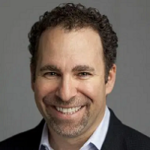 Lyle Berkowitz, MD, CEO, KeyCare
Lyle Berkowitz, MD, CEO, KeyCare
Twitter: @KeyCareInc
VIVE once again was a fantastic education and networking event, bringing in a variety of health systems, digital health companies and health tech investors to talk, learn and connect in a hyper-efficient manner. Highlights included a variety of sessions and technologies exploring how to execute on Hospital-at-Home programs, mindshare with big tech on how they are thinking about big data and the patient experience, a boatload of interesting digital health startups, and of course the continued excellent way they encourage networking by having open spaces and tables available across the hall.
 Dan Ferris, Chief Marketing Officer, Iris Telehealth
Dan Ferris, Chief Marketing Officer, Iris Telehealth
Twitter: @IrisTelehealth
At ViVE, the central theme in our conversations centered around how to improve care delivery amidst the current financial challenges. Status quo is not an option. To drive sustainable and quality behavioral healthcare, we must reimagine how care is delivered, and health system leaders all over the country are interested in rethinking the art of the possible to simultaneously improve care for their communities and the bottom line for their organizations.
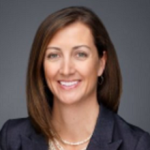 Kim Perry, Chief Growth Officer, emtelligent
Kim Perry, Chief Growth Officer, emtelligent
Twitter: @emtelhealth
There were a lot of fascinating discussions at ViVE about the use of generative AI like ChatGPT in healthcare. And there is a parallel revolution underway that uses the deep learning Transformer (the T in GPT) models with NLP in a radically different way – to extract and analyze data now buried in unstructured medical text. Medical NLP excels at analysis to find the needle in the haystack of existing clinical content that is historically difficult to extract and time consuming to review. While ChatGPT and Medical NLP may have the same underlying technology, it’s applied differently – and both have exciting potential for positive impacts across the healthcare industry.
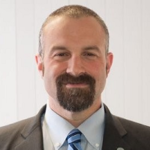 David Stein, CEO, Babson Diagnostics
David Stein, CEO, Babson Diagnostics
Twitter: @babsondx
Babson Diagnostics is bringing broad routine blood testing to the retail pharmacy – and other convenient locations – so that people can get their routine wellness tests and better manage their chronic diseases. ViVE highlighted the intersection of physical services and the digital ecosystems that coordinate those services. In the end, our service can link up with other digital solutions, so we can work together to drive better overall health.
 Jeff Fallon, CEO, eVideon (Vibe Health)
Jeff Fallon, CEO, eVideon (Vibe Health)
Twitter: @evideonhealth
I was a first time ViVE attendee this year and the conference was excellent. The location, attendees, agenda and tone of the whole thing was just so well done. A key takeaway was that, more than ever before, hospitals need technology that reduces not increases work for their staff. And clearly demonstrating ROI to that end is not optional.
 Peyman Zand, Chief Strategy Officer, CereCore
Peyman Zand, Chief Strategy Officer, CereCore
Twitter: @CereCore
It was incredible to see how integral CIOs and healthcare organizations have become. We repeatedly saw this transformation between the technology executives and clinical or business side of the care setting. In the past few years, CIOs brought the right technologies to help our care providers, and now they are an integral part of these teams. They are heading up major initiatives across the healthcare systems and not just technology related ones. Another wonderful thing that we saw at this year’s ViVE/CHiME event was the refreshing perspectives from executives outside of the IT organizations and how they see leveraging the right tools and technologies to help provide better care. By leveraging the vast amount of data that we all possess and leveraging intelligent or even predictive analytics, executives and clinical teams look to improve the health of the population and provide individualized care for each patient. The future that we dreamed of is starting to take shape.
 Russell Teague, Vice President, Advisory and Threat Operations, Fortified Health Security
Russell Teague, Vice President, Advisory and Threat Operations, Fortified Health Security
Twitter: @FortifiedHITSec
ViVE23 Nashville was an amazing an event, with the healthcare sector gathering for several days, discussing a number of key items that are extremely important to our industry. From transformation change in how patient care is delivered, the cost of care through use of technology, the digital healthcare revolution, cybercrime and the insider perspective, to the targeted attacks on critical infrastructure and health information systems. At the event, we had some great discussions on why healthcare in our country is the #1 target for threat actors today. It’s because it pays well, and it remains easy to obtain unauthorized access to large amounts of patient health information. To address these challenges, it takes public and private sectors working together to define solutions that work for healthcare – and that is what ViVE23 was truly about.
 Tom Liddell, CEO, Harmony HealthcareIT
Tom Liddell, CEO, Harmony HealthcareIT
Twitter: @HarmonyHIT
My top takeaway was discussion around the economic challenges that are resulting in cost pressures for healthcare providers. And with demands around cybersecurity at an all-time high, everyone is looking for solutions to do more with less.
 Kathy Ford, Chief Product & Strategy Officer, Project Ronin
Kathy Ford, Chief Product & Strategy Officer, Project Ronin
Twitter: @project_ronin
I attend ViVE annually because this conference continues to deliver a refreshing take on bringing healthcare tech innovation and delivery leaders together to talk about solving some of the toughest challenges we face today. This year did not disappoint. As a Chief Product & Strategy Officer, I look forward to ViVE as a valued channel to connect with industry peers driving healthcare innovation.
 Ben Henson, Senior Marketing Director, QliqSOFT
Ben Henson, Senior Marketing Director, QliqSOFT
Twitter: @QliqSOFT
While a majority of the attendees were vendors, the few healthcare organizations at ViVE 2023 had real problems that need solving. Conversational AI was a hot topic at the show, featured by many vendors, and there was an emphasis on the urgency to start building a business case to adopt these technologies now. Overall, being witness to the industry joining together to have timely conversations, and to share unique perspectives, made the investment in attending well worth it.
 David Hodgson, CEO & Co-Founder, Project Ronin
David Hodgson, CEO & Co-Founder, Project Ronin
Twitter: @project_ronin
It was such a meaningful venue to share the stage with Oracle Health Senior Vice President and General Manager Stephanie Trunzo and other health leaders discussing the future of data, insights, and delivering more systems of intelligences at the point of care, with partners like Ronin. Exchanging ideas and collaborating on solutions is key to advancing healthcare innovation. And ViVE provides a vital opportunity for knowledge exchange and discussion.
 Tamra Durfee, Virtual Information Security Officer, Fortified Health Security
Tamra Durfee, Virtual Information Security Officer, Fortified Health Security
Twitter: @FortifiedHITSec
Networking, networking, networking… sometimes CIOs and CISOs can feel like they have to solve all the problems they are presented with day in and day out on their own. The truth is most hospitals at one point in time or another experience the same or similar issues. Being a part of great conversations where vendors and customers came together to network, collaborate and share how they dealt with complex issues was inspiring!
 Holly Urban, Vice President Clinicial Product Design, Clinicomp
Holly Urban, Vice President Clinicial Product Design, Clinicomp
Twitter: @CliniCompIntl
ViVE showcased several truly exciting innovations in Healthcare IT. As an industry, we need to make sure that new solutions are fully interoperable and don’t lead to further data silos. Ensuring that all the participants of the healthcare IT ecosystem follow USCDI and FHIR standards, and rigorous data governance, will prevent healthcare from being “data rich but information poor.
 G. Cameron Deemer, President, DrFirst
G. Cameron Deemer, President, DrFirst
Twitter: @DrFirst
A comment from HCA CEO Sam Hazen during a CHIME-sponsored luncheon struck me as a key takeaway from ViVE2023. He advised tech companies that in order to impact healthcare, the most important thing is to work from the ‘inside’ of the health system rather than the ‘outside.’ At ViVE, we heard from many young companies offering ideas, both new and old, with many similarities. Yet it was clear that few of them have been invited ‘inside’ health systems to hone their models against real, daily workflow challenges. To benefit from all this energy and innovation, health systems will need to find a path to let these companies ‘in’ so that solutions become relevant rather than simply elegant.
 Kimberly Hartsfield, Executive Vice President, Growth Enablement, VisiQuate
Kimberly Hartsfield, Executive Vice President, Growth Enablement, VisiQuate
Twitter: @VisiQuate
ViVE reinforced that taking a data-driven approach to identify challenges in the revenue cycle and then embracing technology to solve those problems is now a necessity, not a nice to have. The Southwest Airlines debacle over the holidays reminded us all that the cost of doing nothing and mistakenly thinking that the status quo is “good enough” and acceptable can have devastating consequences. The industry is keen on AI, automation, and actionable advanced analytics to support revenue cycle operations that enable tomorrow’s success.
 Sandra Johnson, Senior Vice President, Client Services, Clinicomp
Sandra Johnson, Senior Vice President, Client Services, Clinicomp
Twitter: @CliniCompIntl
VIVE is a unique tradeshow as it focuses on the future of healthcare delivery, challenging the community to shift the focus on how technology can be an enabler instead of a barrier. The panels were stacked with innovative thought leaders who sparked healthy debate representing a variety of perspectives, leaving the audiences feeling inspired and motivated to bring valuable solutions that put the patient at the center of our ecosystem. This is the time to meet the patient where they are and take their health to the next level real-time with adaptable and scalable systems that are poised to incorporate advances in technology and artificial intelligence.
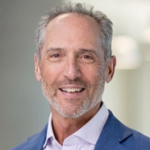 Greg Miller, Chief Growth Officer, Lumeon
Greg Miller, Chief Growth Officer, Lumeon
Twitter: @Lumeon_
A fundamental enabler for solving the workforce challenges and urgent need for health systems to reduce costs is automation. In years past, the concept of automation seemed to be a rather scary topic, but at ViVE this year, automation was a sought after approach to the challenges facing our industry today. Doing things the way we have done historically – throwing more money and people at the problems – won’t work. I think the industry is finally waking up to new approaches and becoming accepting that the future is here, right now.
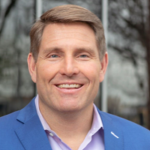 Adam McMullin, CEO, AvaSure
Adam McMullin, CEO, AvaSure
Twitter: @AvaSure
Between the combination of ViVE and Chime, ViVE23 was a phenomenal opportunity to meet with a lot of CIOs. I was really struck by how many of them are thinking about the impact of virtual care as it relates to acute care, and how that can help health systems operate more efficiently to address financial challenges, and leverage their team to address staffing challenges. Of course, after COVID, everything virtual is on the table. We had lots of discussions on how virtual care centers can be pulled together and support things like virtual sitting and virtual nursing. It was a phenomenal opportunity to connect with customers and we also learned things around where we could form partnerships to offer further value so exhibiting at ViVE was a great use of time.
 Kate Pierce, Sr. Virtual Information Security Officer & Exec. Director of Subsidy, Fortified Health Security
Kate Pierce, Sr. Virtual Information Security Officer & Exec. Director of Subsidy, Fortified Health Security
Twitter: @FortifiedHITSec
ViVE did not disappoint! There was something for everyone including excellent educational opportunities, engaging collaboration sessions, meaningful hosted buyer meetings, impactful product announcements, a robust exhibition hall, and networking events of all shapes and sizes. ViVE is truly one of the best healthcare technology events of the year with so many takeaways it is hard to keep track of them all. I’m already looking forward to next year.
 Colin Banas, MD, MHA, Chief Medical Officer, DrFirst
Colin Banas, MD, MHA, Chief Medical Officer, DrFirst
Twitter: @DrFirst
Many regions of the United States and certain patient populations lack access to technologies that can reduce barriers to health equity. The potential of “techquity” in healthcare is vast because it has the power to mitigate social and financial inequalities that negatively impact patient outcomes. Expanding access to things like telehealth and at-home devices for remote medical monitoring, as well as broadband internet connections to make them work, can have a tremendous impact. At ViVE this year, we saw progress in areas such as longwave and shortwave penetration from radio towers and plummeting prices on items like tablets and monitors. A continued focus on techquity can make it possible to give disadvantaged populations the same access to care everyone needs and deserves.
